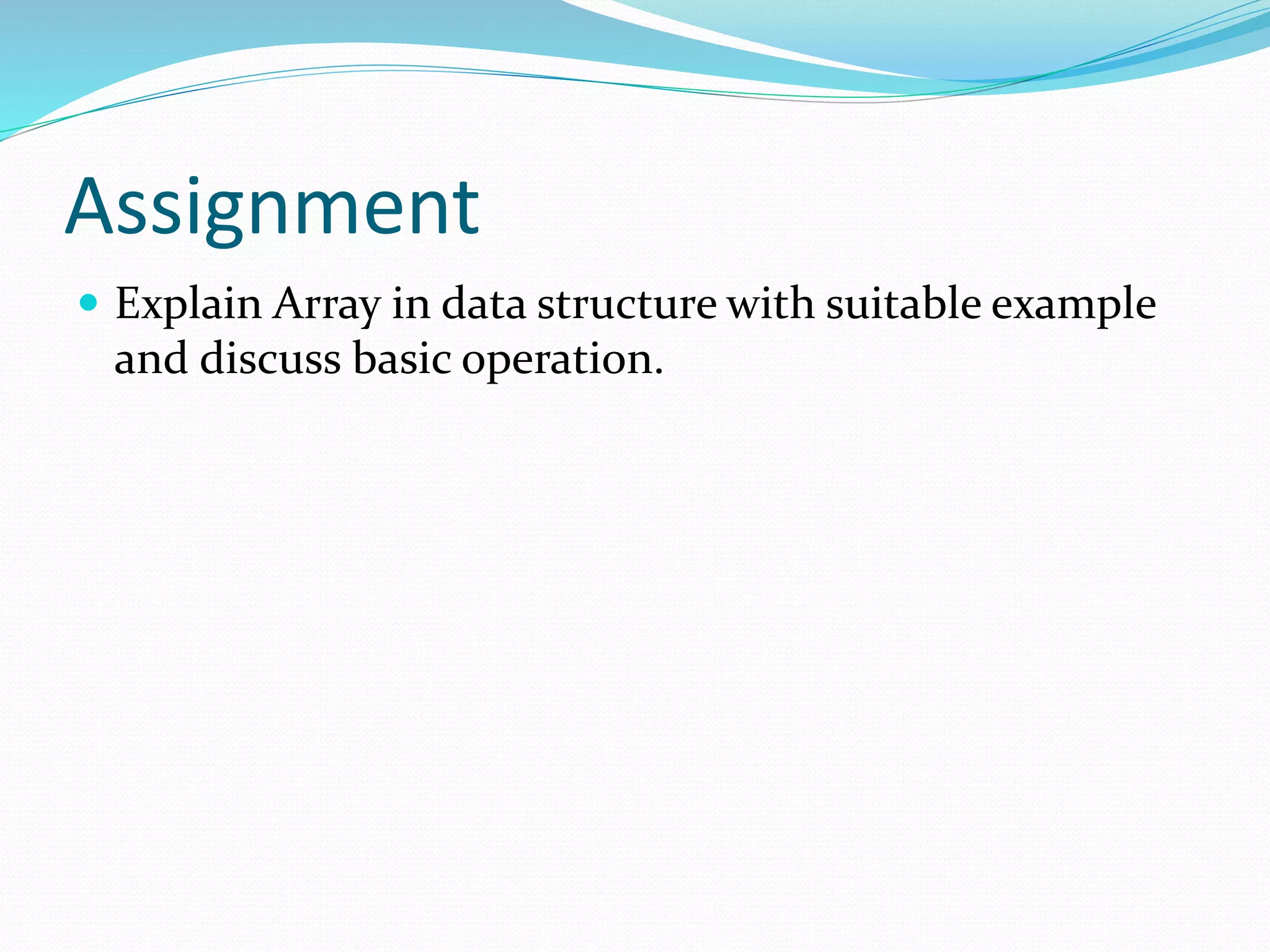This document discusses arrays in data structures. It defines an array as a container that can hold a fixed number of items of the same type. Each item is called an element, and each element has a numerical index used to identify it. Arrays store elements in contiguous memory locations. Basic array operations include traversing elements, inserting/deleting elements, searching elements, and updating elements. The document provides a C program example to demonstrate storing employee salaries in an array and counting salaries above and below 3000. It concludes with an assignment to explain arrays with an example and discuss basic operations.
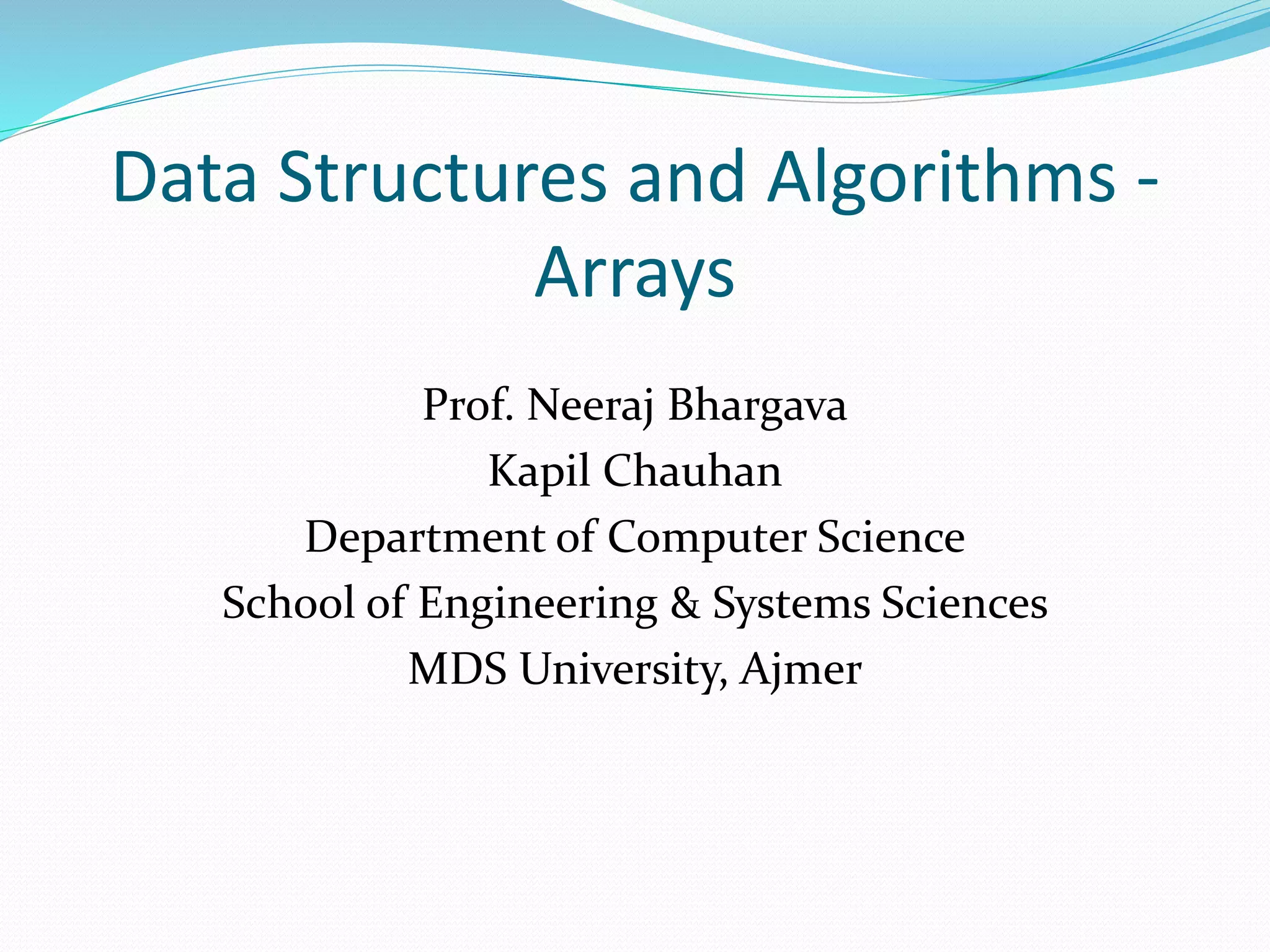

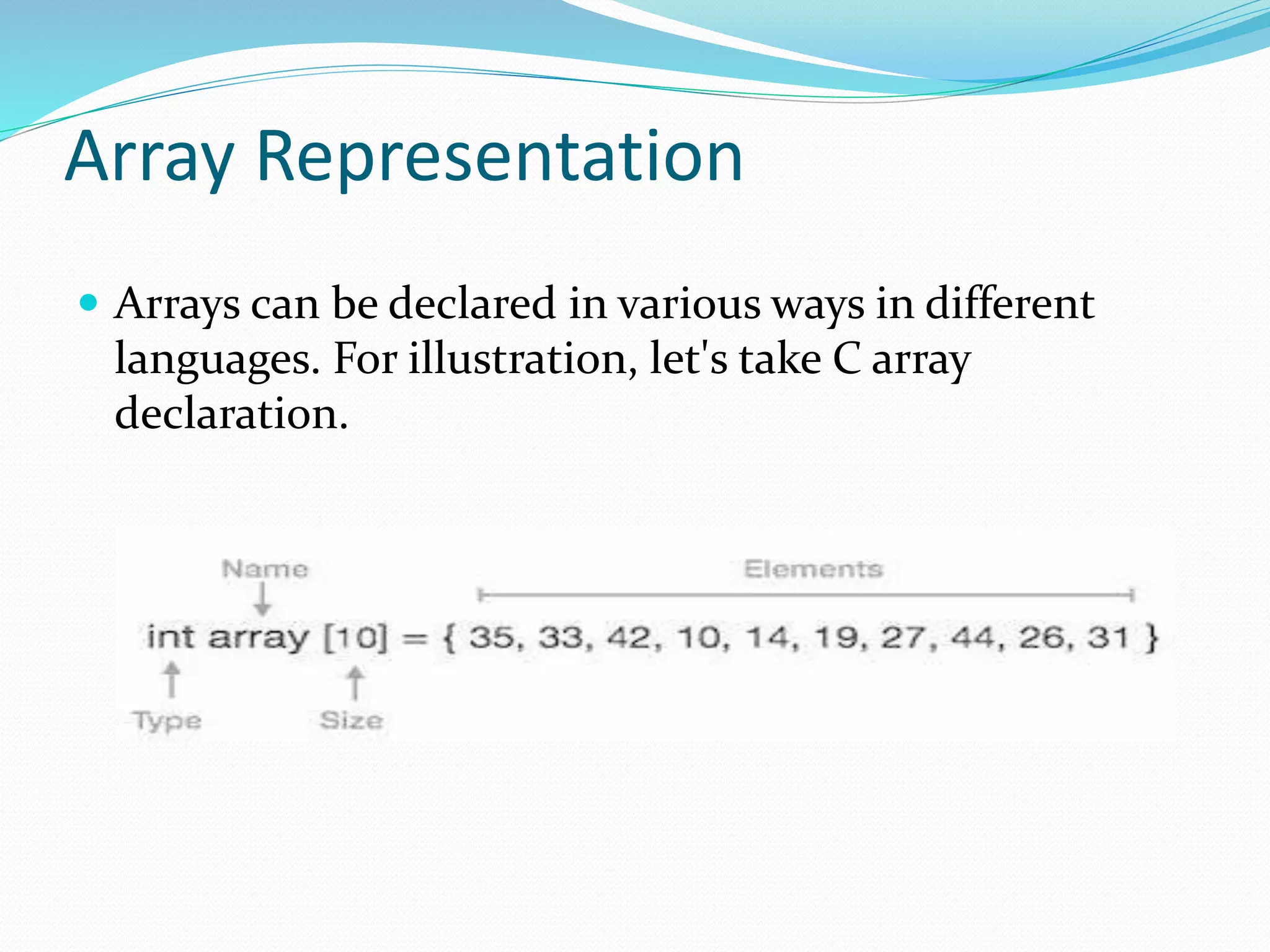

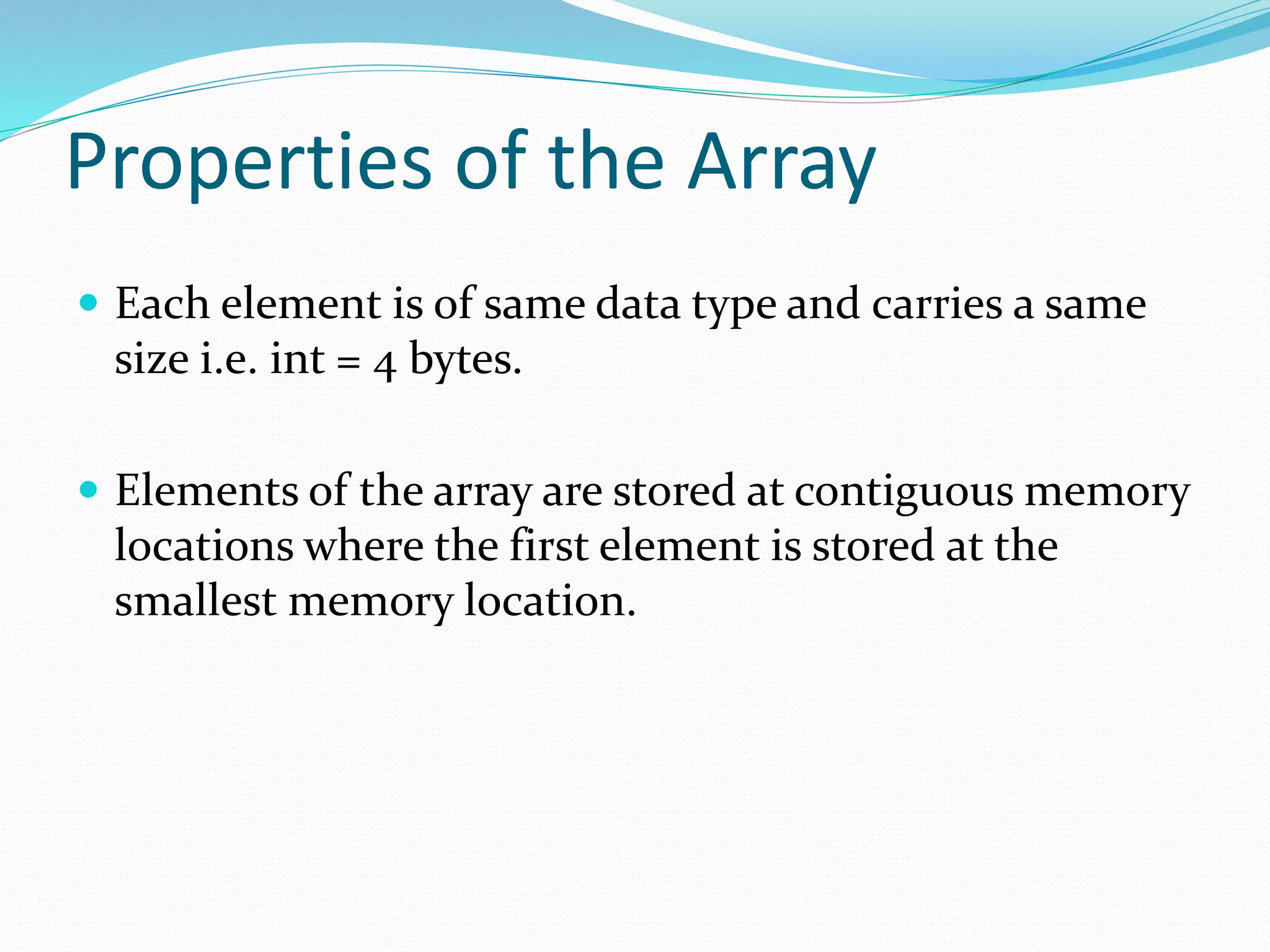
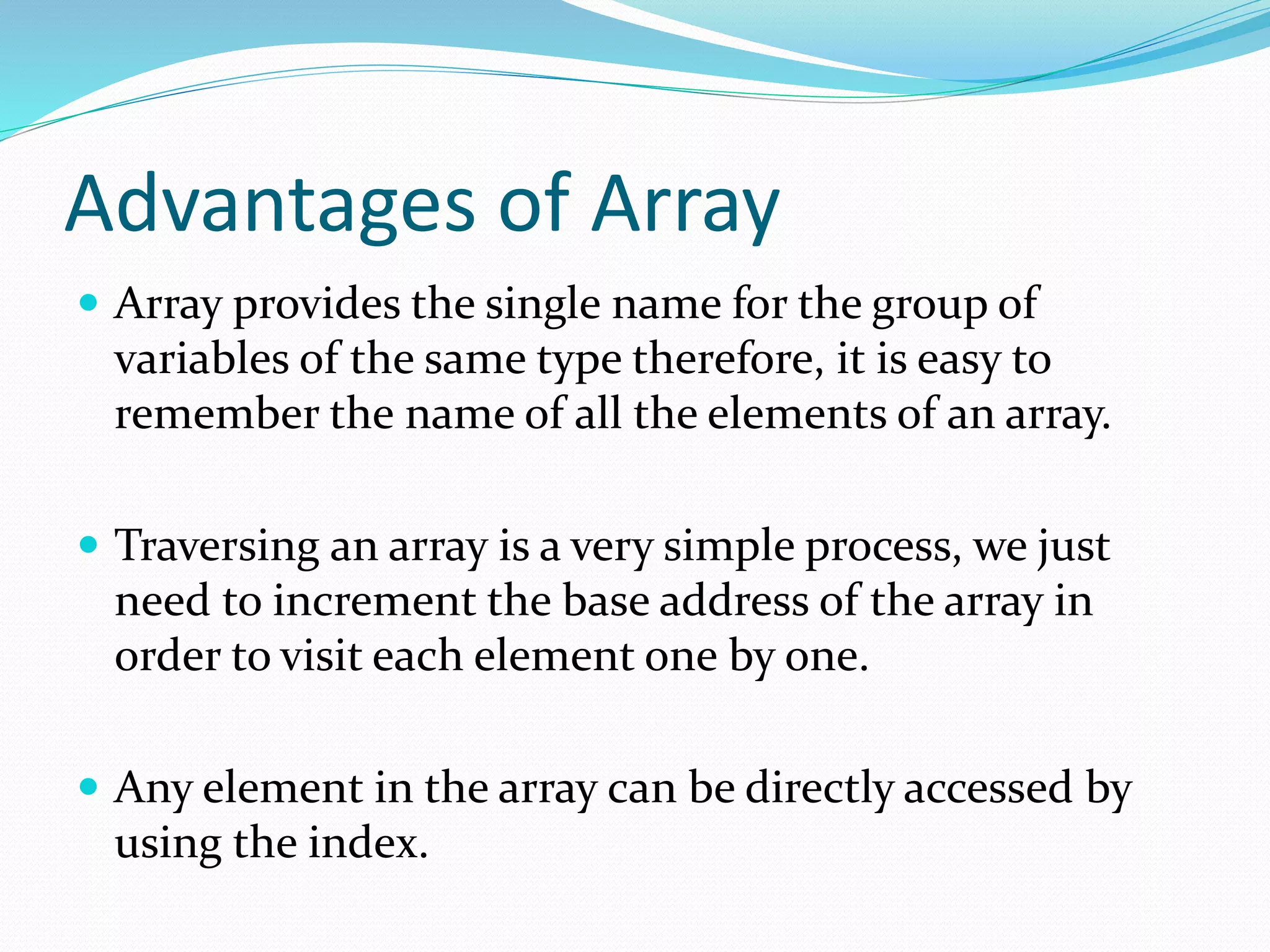
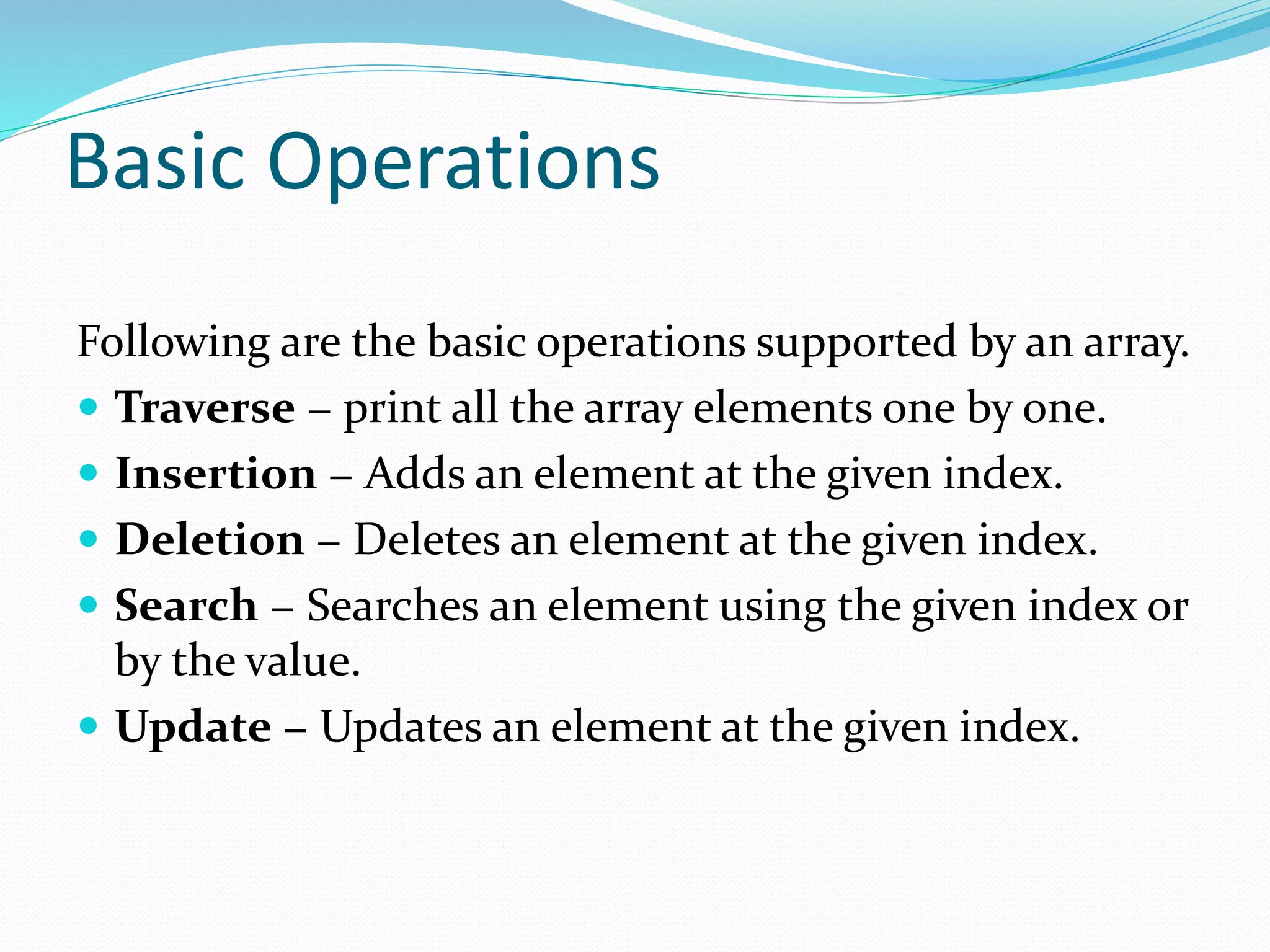
![Program
#include <windows.h>
#include <stdio.h>
#include <stdlib.h>
#define NUM_EMPLOYEE 10
int main(int argc, char *argv[]){
int Salary[NUM_EMPLOYEE], lCount=0,gCount=0,i=0;
printf("Enter employee salary (Max 10)n ");
for (i=0; i<NUM_EMPLOYEE; i++){
printf("nEnter employee salary: %d - ",i+1);
scanf("%d",&Salary[i]);
}
for(i=0; i<NUM_EMPLOYEE; i++){
if(Salary[i]<3000)
lCount++;
else
gCount++;
}
printf("nThere are {%d} employee with salary more than 3000n",gCount);
printf("There are {%d} employee with salary less than 3000n",lCount);
printf("Press ENTER to continue...n");
getchar();
return 0;
}](https://image.slidesharecdn.com/datastructuresandalgorithms-arrays-200512072908/75/Data-structures-and-algorithms-arrays-8-2048.jpg)
